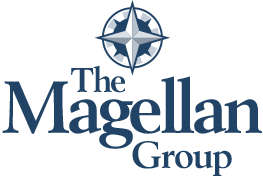You wouldn’t give your kid the keys to the car without having taught him or her proper driving skills. Not having a plan to teach your child how to drive would be reckless. The same holds true when it comes to managing your organization. Lack of preparation and planning will create problems from which your organization may not recover. In order to get the best results, you have to have a plan.
The strategic planning process can seem complicated and overwhelming. But in fact, it’s actually inspiring and liberating to have a clear path for all to follow and from which to make thoughtful business decisions.
Here’s a primer on the process:
The process of developing and executing a set of short and long term goals to support the vision and mission of the organization is important to the success of any organization. The strategic plan is the organization’s roadmap for the future.
Goals, Strategies and Tactics are integral elements of the Strategic Planning process. As such, it’s important to understand the meaning of each and how they work together to develop and execute a strategic plan.
A Goal is what you want to accomplish.
A Strategy is how you are going to accomplish it.
A Tactic is the action item(s) necessary to achieve each strategy.
Tactics support Strategies and Strategies support a Goal.
Each Goal may have a number of Strategies. Each Strategy may have a number of Tactics.
Once you have these elements mapped, resources are allocated and timelines are established for each Tactic.
To help clarify, we’ve developed sample strategies and tactics to support the goal of improving an organization’s financial, managerial and operations reporting process.
Goal: Improve Financial, Managerial, and Operations reporting.
Strategies:
A – Determing types of reporting needed for financial, managerial, and operating purposes.
B – Develop proper controls and procedures for the information gathering process.
C – Develop the reporting database and determine the reporting tools needed.
D – Create finance department organization chart and staffing.
Tactics:
For Strategy A:
Tactic 1 – Identify the customers for financial, managerial and operating reports .
Tactic 2 – Determine the reporting format for each category of reports.
Tactic 3 – Determine the time frame for each category of reports.
For Strategy B:
Tactic 1 – Ensure all relevant transaction types are identified.
Tactic 2 – Ensure that bank accounts are reconciled on a timely basis.
Tactic 3 – Ensure the proper segregation of duties in the information gathering process.
For Strategy C:
Tactic 1 – Determine the source of data needed for the required reports.
Tactic 2 – Determine the volume of transactions needed to be stored.
Tactic 3 – Decide if a consolidated database is needed or if reports can be generated from separate data sources.
For Strategy D:
Tactic 1 – Determine the tasks and skills needed to support the reporting process.
Tactic 2 – Determine which tasks will be grouped together to create department positions.
Tactic 3 – Determine the reporting hierarchy for the department positions.
Tactic 4 – Hire staff; provide training and tools to accomplish the work needed.
Once developed, success of the plan is based on management’s ongoing support and commitment of resources to the process.
And remember our mantra: When you focus on the process, the results will follow.





